Seville stole my heart the moment I wandered through its sunlit streets. The air was thick with orange blossoms and the distant rhythm of flamenco beats.
Each step brought a new surprise. I stumbled upon centuries-old architecture and lively plazas where Andalusia’s spirit seemed to fill every corner.
Seville’s unique mix of tradition and everyday life drew me in. Colorful tiles, ancient palaces, and late-night tapas packed with laughter became my new normal.
The passion in flamenco performances stirred something deep inside me. I started to get why this city has captivated so many.

With endless sunshine and every street promising adventure, Seville really did seduce me. There’s something here for every traveler—whether you’re savoring tapas, wandering Moorish gardens, or just getting lost in the magic of its neighborhoods.
Flamenco Echoes: A Passion That Defines Seville
Seville buzzes with the sounds of flamenco—heels pounding, guitars strumming, voices singing with deep emotion. This passionate art spills into plazas, bars, and even quiet corners, bringing both excitement and tradition.
The Deep Roots of Flamenco Culture
Flamenco is more than music or dance here. It’s a living part of Seville’s soul.
Centuries ago, it began with influences from Roma, Moorish, and Jewish cultures. The art form grew as these groups borrowed from each other, giving flamenco unmatched depth.
As I walked the orange-scented streets, locals told me how families pass down flamenco’s history. Every gesture and note carries meaning—pain, joy, even protest.
Musicians, singers, and dancers work together, sharing stories through their craft. Even if you don’t know Spanish, the emotion comes through in every performance.
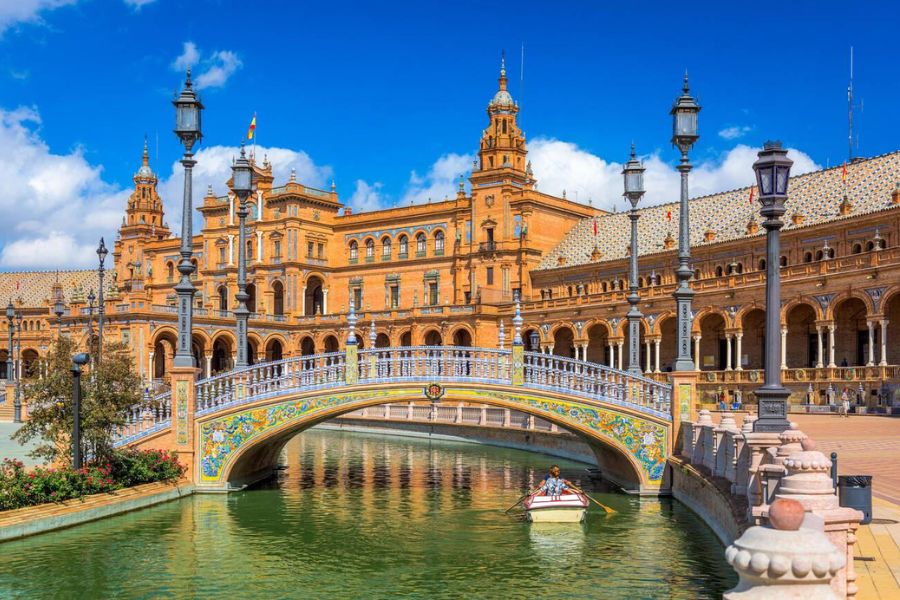
Seville’s commitment to keeping this tradition alive makes visiting feel special. It’s almost like stepping into a moving scene from an old film.
Experiencing Authentic Performances in Triana
Triana, just across the Guadalquivir River, claims the heart of flamenco. I found small, local venues here, far from the big tourist crowds.
The tablaos (flamenco bars) in Triana let you get close to the performers. You can feel the beat through the floor.
One evening, I squeezed into a tiny bar, its walls covered with photos of past flamenco stars. When the show started, the dancer’s heels echoed on the wooden stage.
The guitar’s melody—sharp and smooth at once—carried me away. The singer’s accent added power to every line.
Local performers in Triana weave stories that feel personal. Watching them, I sensed how every clap, stomp, and strum came from years of family tradition.
Travelers who seek out these moments see flamenco as more than a show. It’s a piece of daily life.
How Music and Dance Shape Local Life
In Seville, flamenco seeps into daily routines, festivals, and even family gatherings. Kids learn the dance steps early.
On special nights, whole neighborhoods burst with singing and laughter. I watched casual gatherings turn into mini-performances.
Someone starts a slow handclap, another picks up a guitar, and suddenly, everyone’s attention is on the music. The beauty of these moments is their simplicity—nothing forced, nothing staged.
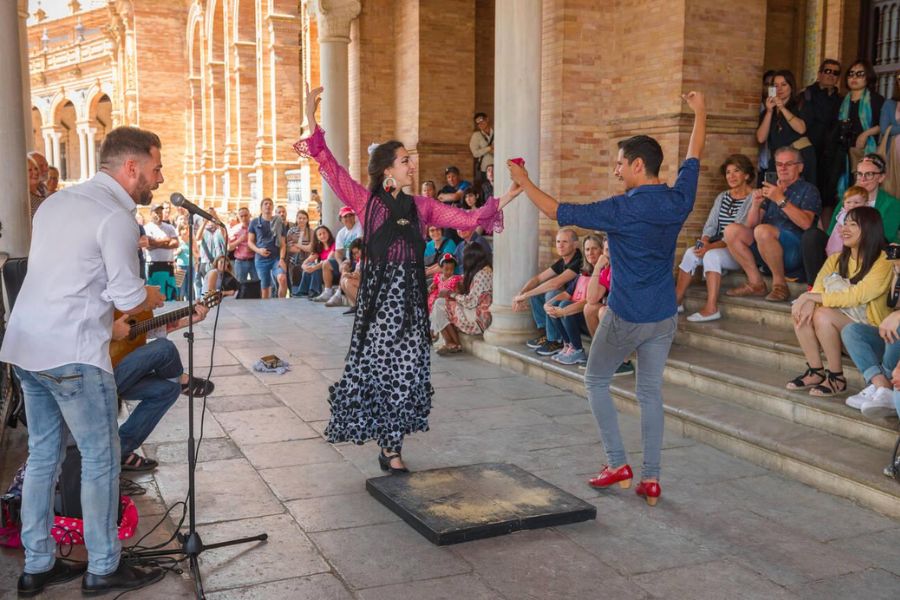
Flamenco shapes the city’s accent, not just in speech, but in how people move and interact. It invites everyone to express how they feel.
To really know Seville, I had to listen for those echoes in everyday life, not just theaters. That connection to music and dance gave my trip a deeper meaning.
Orange Scents and Andalusian Romance
The fragrance of orange blossoms fills Seville’s spring air. It blends with centuries-old traditions and the sensory richness of the Mediterranean.
As I wandered the city, these scents and sights painted a vivid picture of romance and local culture. The memory lingered long after I left.
The Allure of Seville’s Blossom-Lined Streets
Every step through Seville’s historic center brought a burst of orange blossom scent.
In spring, Seville’s streets are lined with over 40,000 bitter orange trees (naranjos amargos). These trees don’t just decorate boulevards or famous plazas.
They wind through every alleyway and courtyard I discovered. The air seemed perfumed.
Most evenings, I’d pause just to breathe in deeply and prolong the experience. People gathered under the shade of these trees, chatting or sitting at a café.
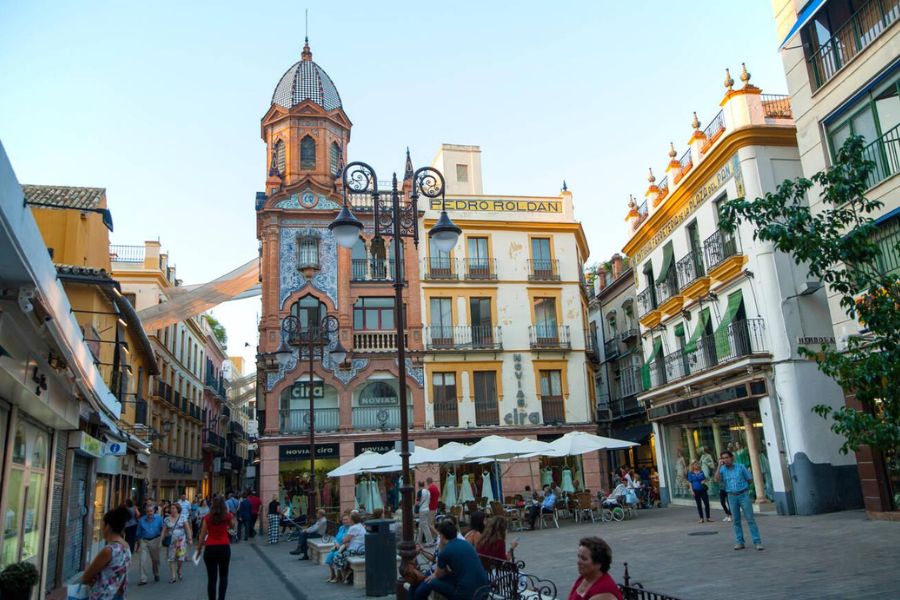
I couldn’t help but snap photos of marble walkways covered in fallen blossoms. Sometimes I’d stop to touch the waxy, dark-green leaves.
The sheer abundance of orange trees gives the city an unmistakable, almost intoxicating identity. I’ve never seen anything quite like it.
Origins and Traditions of Orange Trees
Orange trees didn’t start in Spain. The Moors brought them over a thousand years ago.
As I explored the Alcázar and its gardens, guides explained how these trees came from distant lands and eventually adapted to the Mediterranean climate.
Seville’s orange trees bear fruit that’s too bitter to eat fresh, but their blossoms are harvested for perfume and essential oil. During Semana Santa, the orange scent mingles with incense.
Local tradition says orange branches bring good luck. Some streets even have poetic tiles, celebrating the city’s long love affair with these trees.
Sevillanos take pride in their landscape. The fruit gets exported, especially for British marmalade.
That practical use, mixed with legend and beautiful blooms, makes the orange tree a star in everyday life.
Mediterranean Influences on Scents and Senses
Seville sits deep in the Mediterranean basin, and that heritage touches every sense. Besides oranges, jasmine, rosemary, and lavender bloom everywhere.
Warm air and long sunny days help these plants thrive. The landscape bursts with color and fragrance.
I learned to spot Mediterranean flavors everywhere I went. Cafés often add a slice of orange to drinks.
Pastries sometimes have orange zest for a hint of sweetness. I even found orange peel in local olive oil.
Romance in Seville isn’t just in what you see or taste—it’s in every scented breath. This landscape encourages lingering: long walks, slow meals, and savoring every bit of spring.
Taste the City: Gastronomy, Tapas, and Local Flavors
Seville’s food scene pops with color, shared plates, and the unmistakable mix of local olive oil and sweet aromas. From old markets to lively cafés, each meal comes with a story and flavors that stick with you.
Traditional Andalusian Dishes to Savor
At a crowded tapas bar, I found Andalusian cuisine comforting and exciting.
Dishes like salmorejo—a creamy tomato and bread soup topped with boiled egg and bits of jamón—became instant favorites. The olive oil tasted richer under Seville’s orange-scented air.
Espinacas con garbanzos, slow-cooked spinach with chickpeas and spices, warmed me after long walks. I loved flamenquín too: ham and cheese wrapped in pork, fried for a crisp, savory bite.
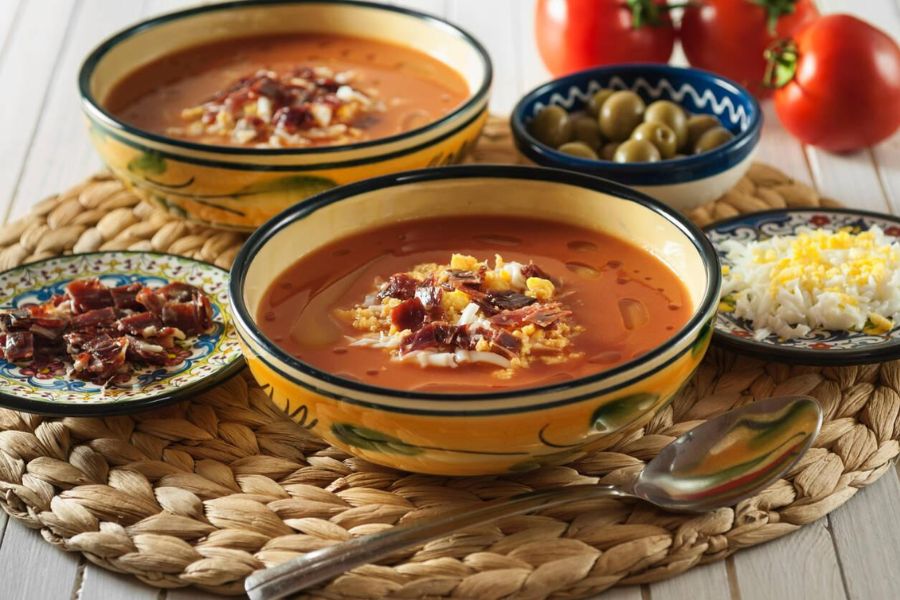
Local pescado frito, small fish dusted with flour and fried, paired perfectly with a cold glass of white wine.
Sharing small plates was always encouraged. Every meal brought fresh bread, vegetables, and a side of lively conversation.
For anyone curious, here are some staples:
| Dish | Main Ingredients |
|---|---|
| Salmorejo | Tomato, bread, olive oil |
| Flamenquín | Pork, ham, cheese, breadcrumbs |
| Espinacas con garbanzos | Spinach, chickpeas, garlic |
| Pescado frito | Fish, flour, olive oil |
Flavors of the Market: Olives, Cheese, and Wine
Stepping into El Mercado de Triana put me face-to-face with heaps of green and black olives. Vendors handed out samples, each marinated in its own mix of spices, garlic, or even orange peel.
Creamy wedges of Manchego cheese—made from sheep’s milk—sat next to local goat cheeses, their flavors ranging from mild to sharp.
Fresh vegetables and herbs filled the air with garden smells. I stopped at a stall selling local sherry and Andalusian wines, where they poured small tastes into clear glasses.
The saltiness of the cheese matched so well with the dry, nutty notes of the wine. In this market, fresh produce, fish, and poultry aren’t just groceries—they’re a way into the heart of Seville’s kitchen.
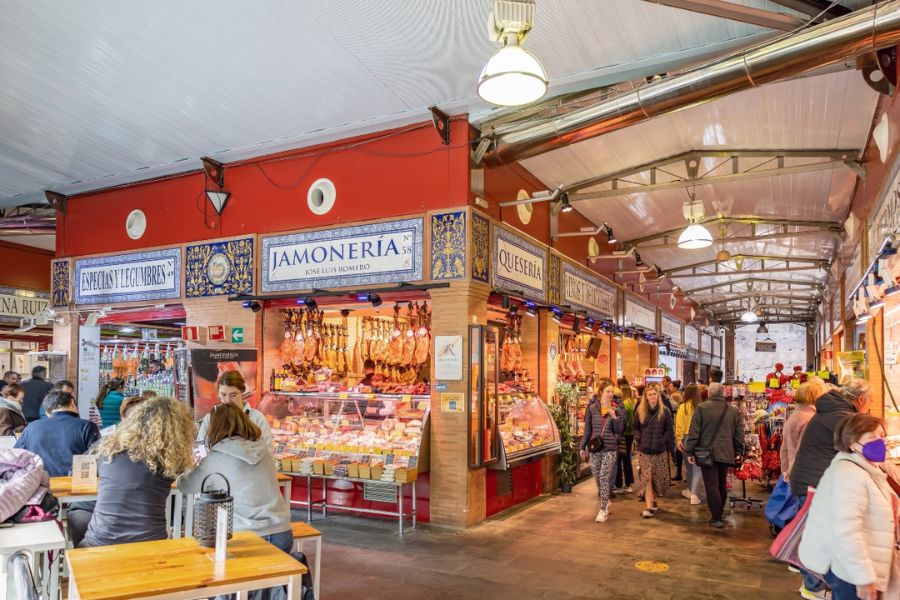
Sampling these foods at the source changed my perspective. Every bite and sip taught me something about the region.
If you have time, try the cheese and wine or buy olives straight from the barrel. It’s an experience you shouldn’t skip.
Cafés, Pastries, and Culinary Experiences
Morning light in Seville means one thing for me: finding a sunny café, sitting outdoors, and ordering tostada with tomato, olive oil, and maybe a smear of butter.
Locals gather for breakfast, dipping their crisp toast in fresh milk coffee. The hum of conversations mixes with the clinking of cups.
Pastries are a sweet highlight. I became a fan of torrija—Spanish-style French toast soaked in milk, sugar, and sometimes wine—especially around Easter.
Pestiños, tiny fried dough glazed in honey, always made a simple treat with my coffee.
Culinary classes around town offer hands-on experiences. I tried filleting fresh fish and making classic tapas right in the kitchen.
Cooking is a big part of life here. Sharing stories over food feels as important as water at the table.
Seville’s café and pastry culture gave me a new appreciation for the slow, social side of eating.
Seville’s Timeless Charm: Architecture and History
Seville reveals layers of culture and stunning architecture. Each one tells a different story from Spain’s long, sometimes dramatic past.
Exploring its grand monuments, winding streets, and unique building styles helped me see the real soul of Andalusia.
Strolling Through the Alcázar and Cathedral
The Real Alcázar of Seville feels like another world. Its Mudéjar palaces are covered with colored tiles, cool courtyards, and carved arches.
I remember feeling small under the trees in the gardens. Every path seemed to promise a new adventure.
Nearby, Seville Cathedral dominates the skyline with its sheer size. It’s the largest Gothic cathedral in the world and holds the tomb of Christopher Columbus.
Climbing the Giralda Tower gave me one of my favorite views—orange rooftops, sunlit plazas, and the river winding away.
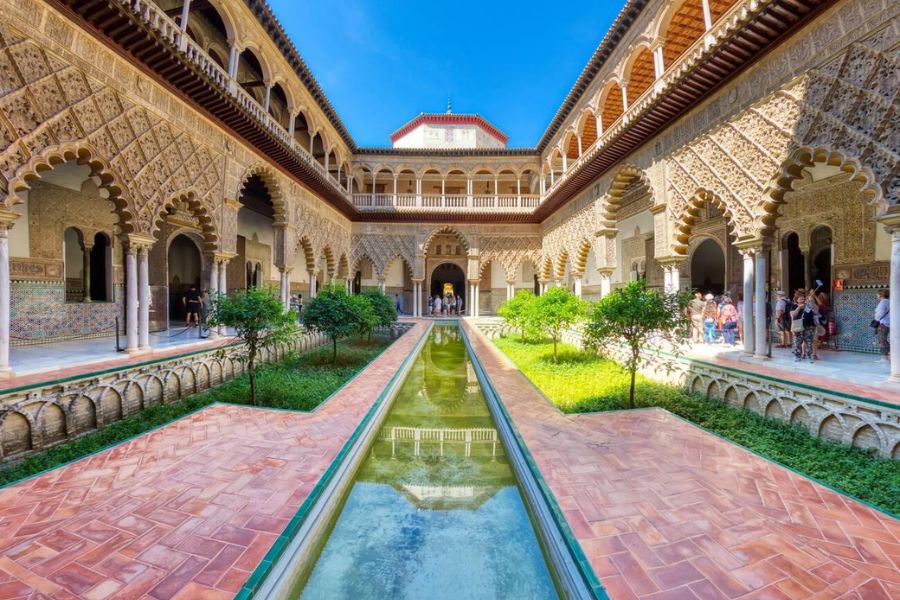
A visit here isn’t just about old stones. It’s about understanding how kings, explorers, and priests shaped this city.
Standing in these places, I could almost feel the power that once ruled Seville and the stories that linger in every corner.
Echoes of Spanish History in Every Corner
Walking Seville’s streets, I sensed layers of Spanish history. Islamic rule, Catholic conquest, and the Civil War left their marks.
The Plaza de España stands as a reminder of Spain’s ambition to adjust after years of turmoil. Built for the Ibero-American Exposition in 1929, its tiled alcoves each represent a Spanish province.
I found it fascinating how history is literally built into the city’s fabric. Statues and monuments honor writers and politicians who helped guide Seville through peace and conflict.
Some corners still hint at scars from Franco’s regime—stories of lives uprooted and people forced to adapt. Even today, these memories shape the city’s soul.
You’ll spot abandon too—empty buildings left from earlier centuries. That sense of something lost, mixed with hope, adds a little mystery to wandering through Seville.
Baroque, Mudéjar, and Modern Marvels
Seville’s architecture feels like a living museum.
Baroque churches like Iglesia del Salvador catch sunlight on their gold altars and painted ceilings.
Mudéjar buildings mix Islamic design with Christian faith.
Their courtyards stay cool, even when summer heat presses in.
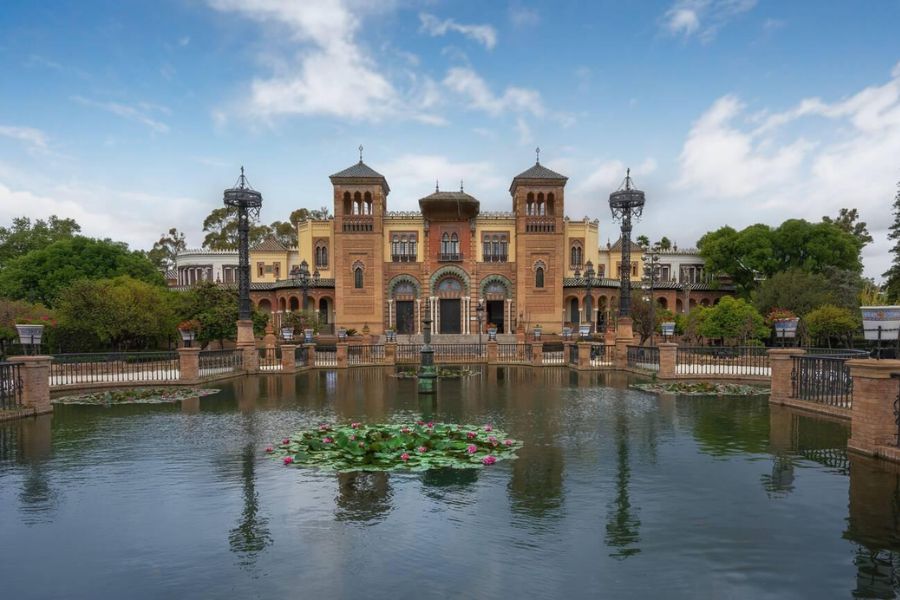
Modern architecture pops up, too.
The Metropol Parasol, or “Las Setas,” stands out—a huge wooden structure that throws shade and offers wild views.
I loved watching crowds gather here.
It’s a real sign that Seville pushes ahead but still respects its history.
Every neighborhood shows off something different—medieval walls, sharp modern shapes, and old homes that still smell like orange blossoms.
Traveling abroad or just exploring my own country, I rarely see places handle time as smoothly as Seville does.
Each building feels like an invitation to wander, learn, and get a taste of what makes this city special.
Living the Seville Lifestyle: Day-to-Night Rhythm
Seville moves at its own pace.
Days just drift into nights, and the whole city seems to know how to relax.
I found it easy to slip into Seville’s calm mornings and lively evenings.
It gave me the freedom to actually live in the moment.
Morning Markets and Afternoon Siestas
Every morning, Seville greets you with fresh air and the scent of oranges.
I liked wandering over to local markets, especially Mercado de Triana.
Stalls there burst with bright produce, jamón, and olives.
Having fresh food around made it easy to eat well without spending much.
People shop early so they can beat the heat.
By late morning, the city slows down.
Locals and visitors either hang out at cafés or head home, hiding from the midday sun.
That’s when the siesta kicks in.
Most small shops close in the afternoon, so I had to plan ahead.
Honestly, embracing the siesta came naturally once I saw how it worked.
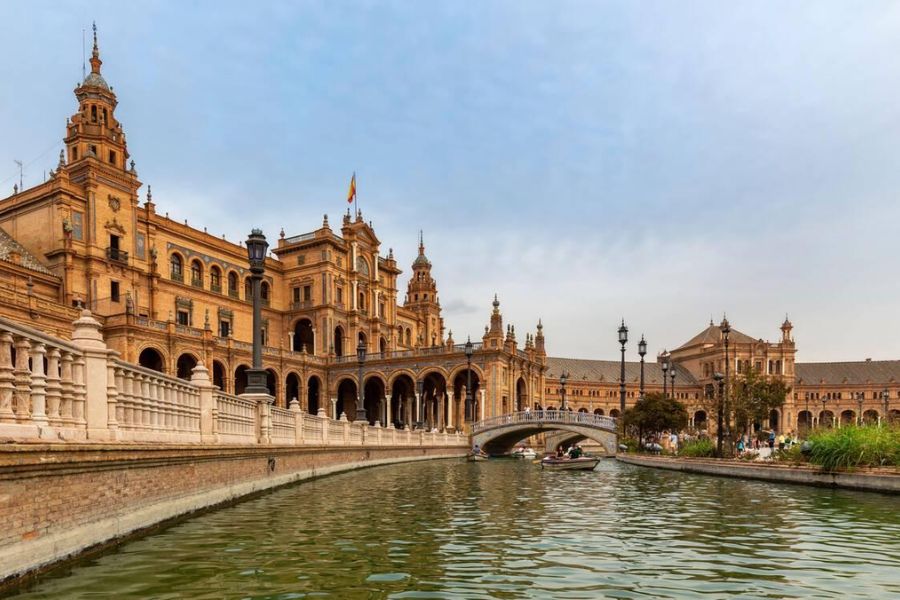
After that pause, Seville wakes up again.
The city’s knack for balancing rest and activity gave me more space to enjoy each part of the day without feeling rushed.
Nightlife, Festivities, and Local Gatherings
Evenings in Seville hit with a whole different rhythm. Once the sun goes down, the air feels lighter, and honestly, the city just wakes up.
Families, couples, and groups of friends spill into the plazas, cafes, and tapas bars. I realized the best way to absorb Seville’s spirit was to jump right in—grabbing tapas on Calle Betis or catching that wild flamenco vibe in La Carbonería.
Nightfall here isn’t just about food and drinks. Because so many outings are actually affordable, I could join local gatherings without much planning—sometimes it’s a street festival, sometimes it’s an outdoor concert, or just chatting under lantern-lit balconies.
Seville has this knack for blending tradition with festivity, and I think that’s what gave me the freedom to really enjoy its social scene.
Public squares like Plaza de España and Alameda de Hércules feel safe and genuinely inviting at night.
The walkable streets let me keep wandering, even late. Around here, life just keeps rolling from dusk deep into the early hours—the city’s energy kind of melts right into the night.

